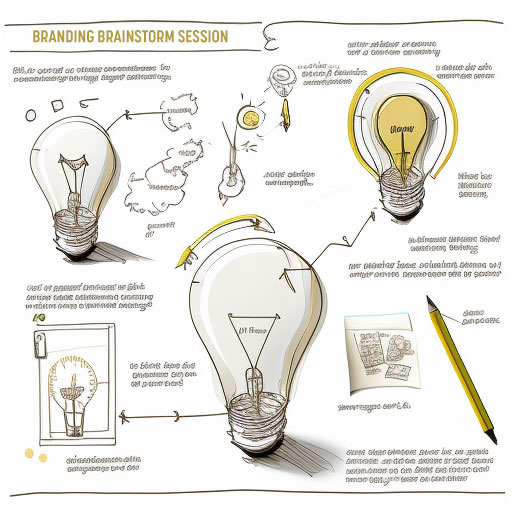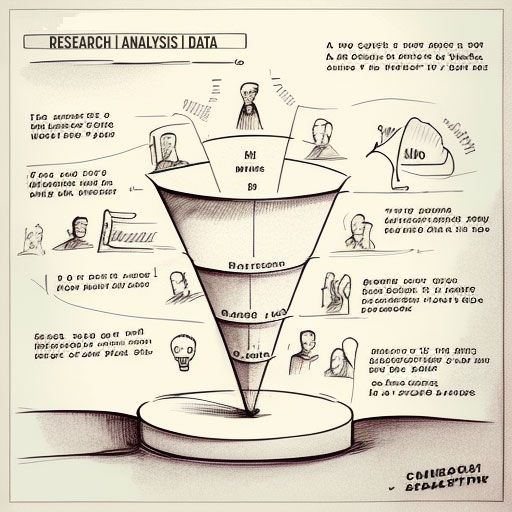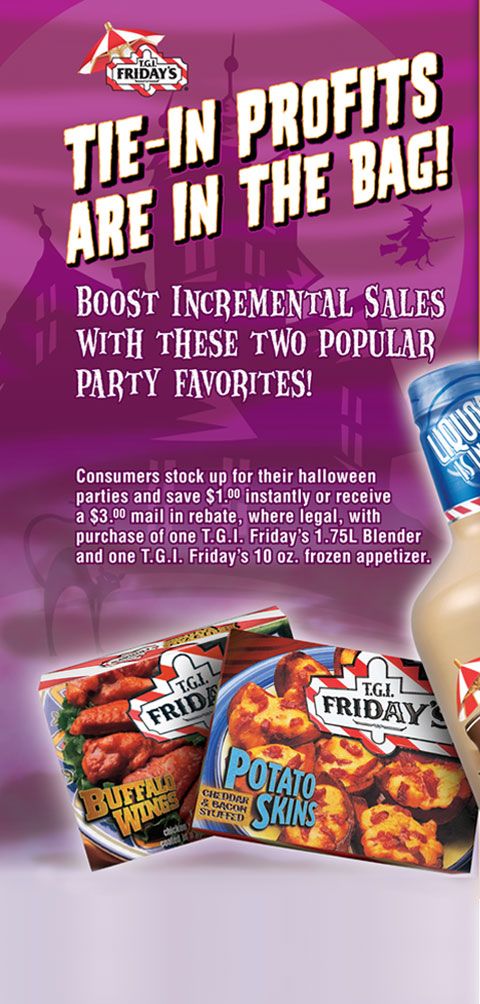Branding
Thank you for considering our agency's branding services for your food, beverage, or consumer products company. Our team is dedicated to helping your brand stand out in the highly competitive food, beverage and consumer products categories. With our expertise in creating targeted marketing discoveries, visualizations and activation strategies, we are confident that we can help you reach your target audience and achieve your business goals.
Let's define Branding:
For most, branding is the process of creating a unique identity and image for a product or company in the minds of consumers. Many believe the purpose of branding is to differentiate a product or company from competitors, create a positive perception in the minds of consumers, and build brand loyalty over time.
Agencies that specialize in branding help companies develop and execute branding strategies that align with their business goals and target audience. These agencies work with companies to develop brand positioning, messaging, visual identity, and marketing campaigns that effectively communicate the company's value proposition and connect with consumers.
The services provided by branding agencies can include market research, brand strategy development, visual identity design, brand messaging development, advertising and promotional campaign development, and ongoing brand management and support. The ultimate goal of these services is to create a consistent and compelling brand experience across all touchpoints and channels, which can help drive consumer engagement, increase brand awareness, and ultimately, grow revenue and market share for the company.
Discover and Develop a Successful Brand Platform
How Creative Teams Can Help Clients Discover and Develop a Successful Brand Platform
Building a strong brand platform is essential for businesses to differentiate themselves from competitors and capture the attention of their target audience. A brand platform encompasses all the elements that make up a brand, including its values, personality, mission, and visual identity. Developing a successful brand platform requires collaboration between businesses and creative teams to create a cohesive and effective brand message.

Creative teams that are well prepared can be an invaluable service to companies of all types.
I. Understanding the Client's Vision
Creative teams first need to understand the client's vision, goals, and objectives. Conducting research on the industry, target audience, and competitors can help the creative team identify the unique selling proposition (USP) of the brand. This step helps ensure that the brand platform resonates with the target audience and aligns with the client's business goals.

Research can take a variety of forms. Not all research is alike.
II. Developing the Brand Strategy
Once the client's vision is clear, the creative team can begin developing the brand strategy. Defining the brand's values, personality, and tone of voice is key to building a consistent brand identity. Creating the brand's mission statement and brand promise, as well as developing a brand messaging framework, can help ensure that all communication is aligned with the brand platform.
III. Crafting the Brand Identity
Creating a visual brand identity is also a crucial part of developing a brand platform. The visual identity includes logo design, typography, and color palette, which can help create a lasting impression on the target audience. Developing brand guidelines for consistency in all brand communications is also important to ensure that the brand is recognizable and memorable.

Hands on development as early as possible assists all teams to delivery a more effective end product.
(Insert image of a creative team designing a brand logo)
IV. Implementing and Testing the Brand Platform
After developing the brand platform, it's time to roll it out across various channels, including print, digital, and social media. Measuring the effectiveness of the brand platform and making necessary adjustments is also important to ensure that the brand is resonating with the target audience and achieving the desired results.

Rarely will you find a brand strategy that is exactly alike to other companies. Creative teams are at their best when given freedom to explore multiple options.
V. Conclusion
In today's competitive market, building a strong brand platform is essential for businesses to stand out from competitors and capture the attention of their target audience. Working with creative teams can help businesses develop a successful brand platform that aligns with their vision and resonates with their target audience.
(Insert image of a business owner and creative team celebrating the success of the brand platform)
In conclusion, developing a strong brand platform is a collaborative process that requires input from both businesses and creative teams. Through market research, brand strategy development, and visual identity creation, creative teams can help businesses build a cohesive and effective brand message that resonates with their target audience.

Brand Conscious Consumer
Being a brand conscious consumer means placing significant value on the reputation, image, and perceived quality of a particular brand when making purchasing decisions.
Internal & External Branding
We feel there is much more to branding than creating a logo and a catchy tagline. It's about creating a brand identity and voice that resonates with both internal teams and external audiences. In this article, we'll explore the benefits of integrating internal and external brand development and explain how businesses can develop a successful brand development strategy.
In today's competitive business landscape, building a strong brand is essential for success. A strong brand can help businesses differentiate themselves from their competitors, build trust with customers, and create a loyal following. But building a brand is not just about creating a logo and a catchy tagline. It's about creating a brand identity and voice that resonates with both internal teams and external audiences. In this article, we'll explore the benefits of integrating internal and external brand development and explain how businesses can develop a successful brand development strategy.
First, let's define what we mean by internal and external brand development. Internal brand development refers to efforts to build brand culture within an organization, align team values with brand values, and create brand ambassadors within the company. External brand development, on the other hand, refers to marketing efforts to build brand recognition, create a brand personality, and build trust with customers.
One of the benefits of integrating internal and external brand development is increased alignment and consistency. When internal teams are engaged in the brand development process, they become empowered to share the brand's values and voice. This leads to increased cohesion and a shared sense of purpose. When this internal alignment is consistent with external messaging, customers are more likely to trust the brand and its messaging. This consistency builds brand recognition, which leads to more loyal customers and a stronger brand reputation.
Another benefit of integrating internal and external brand development is improved employee engagement and satisfaction. When employees feel a strong connection to their brand, they are more likely to feel satisfied and engaged at work. This translates into higher productivity and better customer service, which in turn leads to increased customer loyalty.
Creating a consistent and engaging brand experience is also important for building customer trust and loyalty. A strong brand experience builds customer trust and loyalty. By creating a brand personality that resonates with customers, businesses can build an emotional connection with their audience. This emotional connection leads to a stronger customer relationship and a more loyal customer base.
Finally, integrating internal and external brand development leads to increased brand awareness and recognition. Consistent brand messaging across all touchpoints results in increased recognition and awareness. This consistency helps customers remember and identify the brand more easily, which can lead to increased customer loyalty and repeat business.
To develop a successful brand development strategy, businesses should start with market research to identify their target audience and competitor landscape. Once these factors are identified, businesses can develop a brand positioning strategy that is unique and engaging. A strong brand positioning strategy should be backed up by a unique brand identity, messaging, and guidelines. These elements should be communicated consistently across all touchpoints, including advertising, social media, and customer service.
In summary, integrating internal and external brand development has many benefits for businesses. By aligning internal teams with brand values and engaging customers with a consistent and engaging brand personality, businesses can build trust, loyalty, and awareness. To develop a successful brand development strategy, businesses should focus on creating a unique brand positioning, backed up by strong brand identity, messaging, and guidelines. With a strong brand development strategy, businesses can differentiate themselves from their competitors and create a loyal following that will drive success.

Internal Branding
Internal branding refers to the process of aligning and communicating the company's brand values, vision, and mission to its employees and stakeholders. The purpose of internal branding is to ensure that all members of the organization understand the brand's identity, purpose, and goals, and are motivated to support them.
Branding agencies can assist companies with developing internal branding strategies and programs that help to foster a strong company culture, create a shared sense of purpose, and reinforce the brand's values and messaging throughout the organization. This can include developing brand guidelines, providing employee training, and creating internal communication materials that effectively communicate the brand's identity and messaging to employees.

External Branding
External branding, on the other hand, refers to the process of developing and executing branding strategies and campaigns that target external audiences, including customers, partners, and investors. The purpose of external branding is to build brand awareness, create a positive brand image, and drive customer engagement and loyalty.
Branding agencies can help companies with developing external branding strategies that effectively communicate the brand's unique value proposition, personality, and messaging to its target audience. This can include developing visual branding elements, such as logos, color palettes, and marketing materials, as well as creating advertising campaigns and social media strategies that help to build brand awareness and drive customer engagement.
Consumer Segmentation



While it is important to approach consumer segmentation with sensitivity and avoid making assumptions or stereotypes about any group of people based on their demographic characteristics, there may be some general trends or patterns that emerge from market research studies. However, it is important to recognize that these trends are not true for every individual in a particular demographic group, and that every person has their own unique set of values, beliefs, and priorities.
Understanding consumer segmentation requires sensitivity and avoidance of making assumptions or stereotypes about any group of people based on their demographic characteristics. The goal of market research should be to gather insights that can help brands better understand and meet the needs of their target audience, while respecting the diversity and individuality of each consumer.
Brand Conscious Consumer
A "Brand Conscious Consumer" is a consumer who places a high value on the quality and reputation of the brands they purchase and consume. These consumers tend to be very loyal to certain brands and are willing to pay a premium price for products that are associated with well-established, reputable brands.

Brand conscious consumers tend to be highly aware of the brands they purchase and are willing to pay more for products associated with well-established, reputable brands.
Brand conscious consumers often have a strong attachment to certain brands and may identify with the values and personality that the brand represents. They may also be influenced by factors such as brand reputation, perceived quality, and social status associated with owning or using a particular brand.

Many brand conscious consumers identify with the values and personality that a brand represents, and may proudly display the brand's logo on their clothing or accessories.
In the age of social media and online reviews, brand conscious consumers have more access than ever to information about products and brands, and they are increasingly able to make informed purchasing decisions based on this information. As a result, companies that want to appeal to brand conscious consumers need to focus on building a strong brand reputation, providing high-quality products, and communicating their brand's values and personality effectively to consumers.

Companies that want to appeal to brand conscious consumers need to focus on building a strong brand reputation and communicating their brand's values effectively to consumers, such as by emphasizing their history of providing trusted quality products.
Arrive at "Ah-Ha" Moments
Ah-Ha moments are ground breaking. These moments can be the key to unlocking innovative solutions and groundbreaking ideas. But how do creative teams arrive at these moments? Here are five steps that can help you and your team reach that "ah-ha" moment.

Brainstorming
To get the most out of your brainstorming sessions, encourage your team to think outside of the box and come up with wild, imaginative ideas. This free-flowing environment can lead to unexpected connections and insights.

Collaboration

Research

Experimentation

Open-Mindedness
Master & Sub Brands
Let's define a master and sub brand.
In marketing, a master brand or parent brand serves as an overarching brand name that encompasses a large family of smaller brands, sub brands and their products.
In today's crowded marketplace, businesses need to have a strong brand identity that resonates with their target audience. One way to achieve this is by creating a master brand and sub brands based on consumer segmentation. Let's explore how businesses can use consumer segmentation to create a master brand and sub brands that connect with their target audience.

Brand appeal, when done right, should be instantaneous.
First, let's define what we mean by consumer segmentation. Consumer segmentation is the process of dividing a large consumer market into smaller groups of consumers with similar needs or characteristics. These groups, also known as market segments, can then be targeted with specific marketing messages and product offerings.
The first step in creating a master brand and sub brands based on consumer segmentation is to identify the different segments within your target audience. This can be done through market research, such as surveys or focus groups. By understanding the unique needs and preferences of each segment, businesses can tailor their messaging and products to better meet their needs.

Brand planning is a process.
Once the different segments have been identified, businesses can begin to create a master brand and sub brands that connect with each segment. The master brand should represent the overall identity of the business, while the sub brands should be tailored to the specific needs and preferences of each segment.
For example, let's say a business sells food products. Through market research, the business identifies two main segments within their target audience: passionate cooks and take-home meal enthusiasts. The business can then create a master brand that represents the overall identity of the company, while also creating two sub brands that connect with each segment.
The sub brand for passionate cooks could focus on durability, functionality, and performance, with products designed for serious, consistent use. The sub brand for inexpensive use, on the other hand, could focus on style, design, and trends, with products that are both functional and fashionable.
By creating sub brands that speak directly to each segment, businesses can better connect with their target audience and build a stronger brand identity. This approach also allows businesses to differentiate themselves from their competitors and stand out in a crowded marketplace.

Brand planning is a process.
Another benefit of creating a master brand and sub brands based on consumer segmentation is increased brand loyalty. By tailoring products and messaging to the specific needs of each segment, businesses can build a stronger emotional connection with their customers. This emotional connection leads to increased brand loyalty and a stronger customer relationship.
In conclusion, creating a master brand and sub brands based on consumer segmentation is an effective way for businesses to build a strong brand identity and connect with their target audience. By understanding the unique needs and preferences of each segment, businesses can tailor their messaging and products to better meet their needs. This approach leads to increased brand loyalty and a stronger customer relationship, which ultimately leads to business success.
Our Work

In-Store Deliverables
In-store deliverables can take many forms. Case cards, pallet wraps, couponing, etc.

Tie-Ins
Tie-ins leverage the strengths of each brand to increase sales and customer loyalty. By combining two products that are often used together or consumed at the same time, companies can increase the perceived value of both products and attract new customers who may not have been interested in one product alone.

Trade Brochure
A significant task to act as the hub of creative and trade related activities for all North American spirits whosalers.
- Copyright © 2022 Linear SC, Inc. | Website Design, Development & Support: PowerPro Live